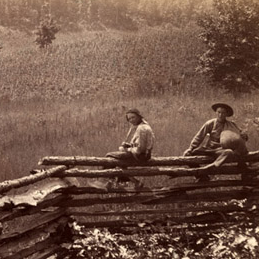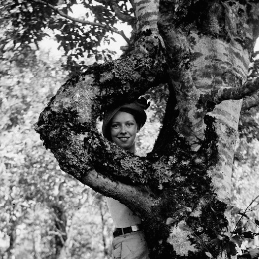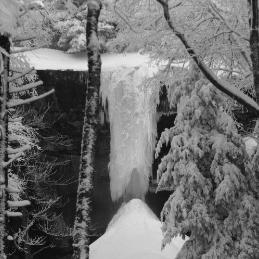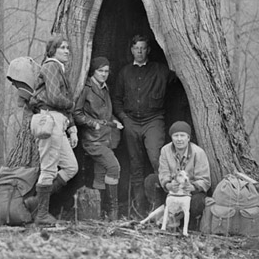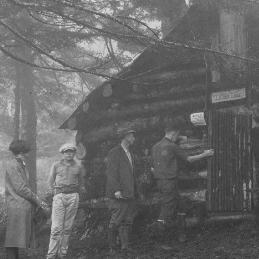Browse
Export 88 results:
Filters: Keyword is Air pollution [Clear All Filters]
"Optical Measurements of Aerosol Size Distributions in Great Smoky Mountains National Park: Dry Aerosol Characterization." Journal of the Air & Waste Management Association 50, no. 5 (2000): 665-676.
"Biogenic hydrocarbon contribution to the ambient air of selected areas." Atmospheric Environment 15, no. 9 (1981): 1643-1651.
Code Red: America's Five Most Polluted National Parks. Appalachian Voices, National Parks Conservation Association, Our Children's Earth Foundation, 2002.
Code Red! : America's Five Most Polluted National Parks. Appalachian Voices, 2004.
An Appalachian Tragedy : Air Pollution and Tree Death in the Eastern Forests of North America. San Francisco, CA: Sierra Club Books, 1998.
Ozone Biomonitoring Trend Plots and Surveys in Great Smoky Mountains National Park In Third Annual Southern Appalachian Man and the Biosphere Conference. Gatlinburg, TN: Tennessee Valley Authority, 1992.
"Surviving Great Smoky." New Scientist 167, no. 2245 (2000): 14-15.
"NPCA Files Suit Against TVA for Smokies Pollution." National Parks 74, no. 11-12 (2000): 12-13.
"Unhealthy Air Awaits Visitors at Great Smokies." National Parks 74, no. 7-8 (2000): 11-12.
"Aerosol Light Scattering Measurements as a Function of Relative Humidity." Journal of the Air & Waste Management Association 50, no. 5 (2000): 710-716.
"Seasonal Variations in Aerosol Composition and Acidity at Shenandoah and Great Smoky Mountains National Parks." Journal of the Air & Waste Management Association 47, no. 3 (1997): 411-418.
Final Report: Southeastern Aerosol and Visibility Study In SEAVS. Great Smoky Mountains National Park: National Park Service, Electric Power Research Institute, 1995.
"The Effect of Switching Mobile Sources to Natural Gas on the Ozone in the Great Smoky Mountains National Park." Proceedings of the Air and Waste Management Association's Anual Meeting and Exhibition (2004): 5247-5259.
Clearing the Air: Protecting a National Jewel. National Parks and Conservation Association, 1999.
Monitoring and Reserch Related to Atmospheric Deposition in Great Smoky Mountains National Park In National Acid Precipitation Assessment Program: Aquatic Effects Task Group and Terrestrial Effects Task Group Peer Review. Asheville, NC: U.S. Department of Agriculture , 1984.
"Relationships between Cellular Injury, Visible Injury of Leaves, and Ozone Exposure Levels for Several Dicotyledonous Plant Species at Great Smoky Mountains National Park." Environmental and Experimental Botany 36, no. 2 (1996): 229-237.
"Critical Loads and Exceedances for Nitrogen and Sulfur Atmospheric Deposition in Great Smoky Mountains National Park, United States." Ecosphere 7, no. 10 (2016).
Some Investigations on the Optical Properties of the Continental Blue Haze. Fort Monmouth, NJ: U. S. Army Signal Research and Development Laboratory, 1962.
"Bad Air Days." National Parks 75, no. 5-6 (2001): 32-35.
Leroy G. Fox Collection In Leroy G. Fox Collection. Knoxville, TN: University of Tennessee Libraries, Special Collections, 1950.
"Great Smoky Mountains Plants Studies for Ozone Sensitivity." Park Science: A Resource Management Bulletin 12, no. 1 (1992): 6-7.
Ozone Response of Selected Plant Species from the Great Smoky Mountains National Park In First Annual Southern Appalachian Man and the Biosphere Conference. Gatlinburg, TN: Tennessee Valley Authority, 1990.
"Widespread Reductions in Haze across the United States from the Early 1990s through 2011." Atmospheric Environment 94 (2014): 671-679.
"Color Perception Through Atmospheric Haze." Journal of the Optical Society of America a-Optics Image Science and Vision 17, no. 5 (2000): 831-835.
Aluminum Precipation, Beech Flats and Walker's Prong Creeks, Great Smoky Mountains National Park In 1st Conference on Scientific Research in the National Parks, Edited by Robert M. Linn. Vol. II. New Orleans: U.S. Department of the Interior, National Park Service, 1976.












